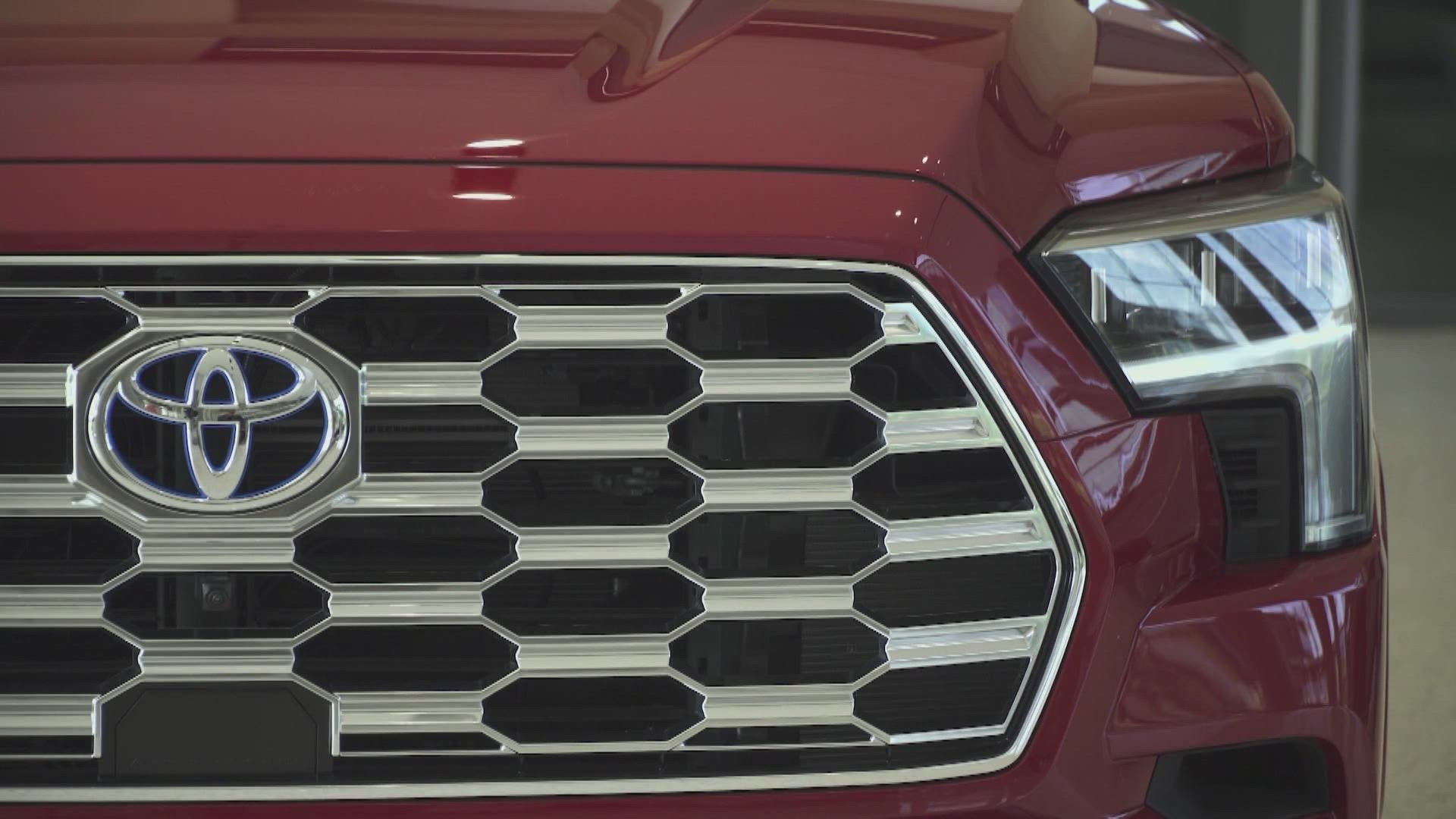PLANO, Texas — As a result of having no Republican support, congressional Democrats and President Joe Biden last month barely squeaked through the ‘Inflation Reduction Act’.
The legislation will eventually provide up to $7,500 in incentives to encourage Americans to buy electric vehicles (EVs), and therefore, encourage auto manufacturers in the U.S. to shift from gas-powered vehicles toward electric.
The incentives
The full thrust of the incentives kick in starting in 2023. If you have recently bought an electric vehicle, getting a federal credit can be tricky, because the incentives are transitioning from the much more limited previous program to the one recently signed into law.
The Congressional Research Service (CRS) explains in this analysis, “Multiple factors determine whether an EV purchased in 2022 qualifies for federal tax credits. Many EVs purchased before August 16, 2022, qualify for a tax credit of up to $7,500 (with smaller amounts available for certain makes and models)."
The analysis says, "Vehicles manufactured by Tesla or General Motors purchased in 2022 are not eligible for tax credits, as Tesla and GM have exceeded the 200,000 vehicle threshold that limits the number of tax credits that can be claimed for vehicles made by a manufacturer.”
And if you purchased a new electric vehicle around the time the Inflation Reduction Act was passed and signed, the CRS outlines in its analysis how you fall into a different category:
“For vehicles purchased after August 16, 2022, only vehicles for which final assembly occurred in North America qualify. The U.S. Department of Energy has released a list of model year 2022 and 2023 vehicles with final assembly in North America. EV purchasers who ordered a vehicle before August 16, 2022, and take delivery of their vehicle at a later date may be able to claim tax credits for vehicles not assembled in North America if they had a 'written binding contract' to purchase the vehicle. In answering the question 'what is a written binding contract.' The IRS noted that a nonrefundable deposit or down payment of 5% of the purchase price can be an indication of this type of contract."
What effect are the incentives already having on the auto industry?
WFAA recently went inside the sprawling Toyota Motor North America (TMNA) headquarters in Plano to talk about whether the newly passed act is expected within the industry to truly rev up a mass transition for automakers.
“It will change the industry,” said TMNA Executive Vice President of Sales Jack Hollis.
When asked if the wheels were already spinning on that seismic change, Hollis assured, “I think there are people sitting in meetings right now… today. Because not only are (the wheels) spinning, but they have to accelerate.”
Hollis believes the incentives outlined in the law will spur huge new competition and investment into EV manufacturing in the U.S.
Texas is an increasingly important player in the auto industry
Any developments in this industry are significant in Texas, which is home to major auto headquarters -- Toyota North America in Plano and Tesla in Austin. The state also has major auto assembly facilities -- Toyota in San Antonio, General Motors in Arlington, and Tesla in Austin.
Additionally, according to Federal Reserve Market Research, motor vehicle manufacturing in Texas recently accounted for a near-record high 13,655 Texas jobs.
Tapping the brakes on the new incentive program
How soon before those manufacturers and workers are busy churning out a much higher number of electric vehicles because of these incentives? Looking at how things stand now, Hollis thinks that going forward it may be hard for many consumers to get that full new credit for electric vehicles.
That’s because, as is also laid out by the CRS analysis, the act that provides for these incentives requires that a greater percentage of the vehicle’s battery and the critical minerals in it must come from North America, or other countries that have a free trade agreement with the U.S.
Hollis said that capacity just isn’t there yet, “The government's going to have to change. They're going to have to realize even what they just enacted…they got excited about it… but the enactment of that act is going to create changes for them–for government–as well."
Hollis continued, "Because where's all the mining? Where's all the resources? You have to go find them. You're going to have to be working together. It’s going to be corporations working together, the business sector and the government sector is going to have to work on this.”
To underscore that, the CRS explains: "The maximum potential credit is the sum of two amounts: the critical mineral amount and the battery component amount."
- Critical Minerals ($3,750): Starting in 2023 (and after the Treasury issues guidance on this requirement), to qualify for this portion of the credit, at least 40% of the value of the battery’s applicable critical minerals must have been extracted or processed in the United States or in a country with which the United States has a free trade agreement, or recycled in North America. The 40% amount increases to 50% in 2024, 60% in 2025, 70% in 2026, and 80% in 2027 and thereafter.
- Battery Components ($3,750): Starting in 2023 (and after the Treasury issues guidance on this requirement), to qualify for this portion of the credit, at least 50% of the value of the battery’s components must have been manufactured or assembled in North America. The 50% amount increases to 60% in 2024 and 2025, 70% in 2026, 80% in 2027, 90% in 2028, and 100% in 2029 and thereafter."

